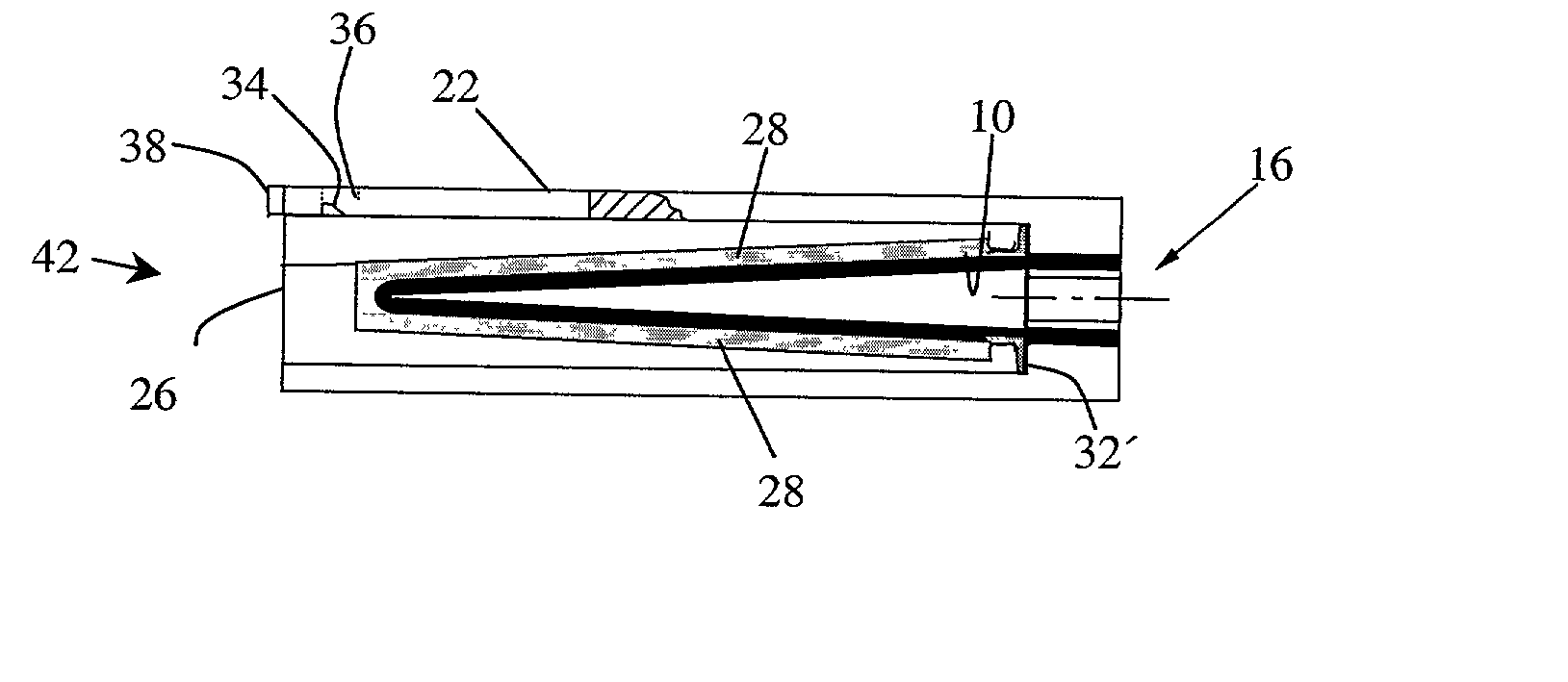Metal air cell system
a technology of metal air cells and metal air, applied in the field of metal air cells, can solve the problems of electrolyte leakage and contamination of users, cell failure due to anode degradation, and virtually inexhaustible supply of energy provided by metal air electrochemical cells
- Summary
- Abstract
- Description
- Claims
- Application Information
AI Technical Summary
Problems solved by technology
Method used
Image
Examples
Embodiment Construction
[0060] A metal air cell includes an anode and the cathode. An electrolyte is disposed between the cathode and the anode, the electrolyte provided within the anode, separately at the interface between the cathode and the anode, or both within the anode and separately at the interface between the cathode and the anode. In general, the anode is provided in two parts and the anode side of the cathode has two major surfaces that complement the anode parts. Accordingly, the anode parts are disposed outside of the cathode major surfaces.
[0061] In further embodiments, the metal air cell incorporates a fluid management system, comprising an oxidant passageway in fluid communication with a cathode of the cell and a thermal management passageway for removal of heat and provision of cooling fluid. The oxidant passageway can be in fluid communication with ambient air, a substantially pure oxygen source, or both.
[0062] Referring now to the drawings, an illustrative embodiment of the present inven...
PUM
 Login to View More
Login to View More Abstract
Description
Claims
Application Information
 Login to View More
Login to View More - R&D
- Intellectual Property
- Life Sciences
- Materials
- Tech Scout
- Unparalleled Data Quality
- Higher Quality Content
- 60% Fewer Hallucinations
Browse by: Latest US Patents, China's latest patents, Technical Efficacy Thesaurus, Application Domain, Technology Topic, Popular Technical Reports.
© 2025 PatSnap. All rights reserved.Legal|Privacy policy|Modern Slavery Act Transparency Statement|Sitemap|About US| Contact US: help@patsnap.com



